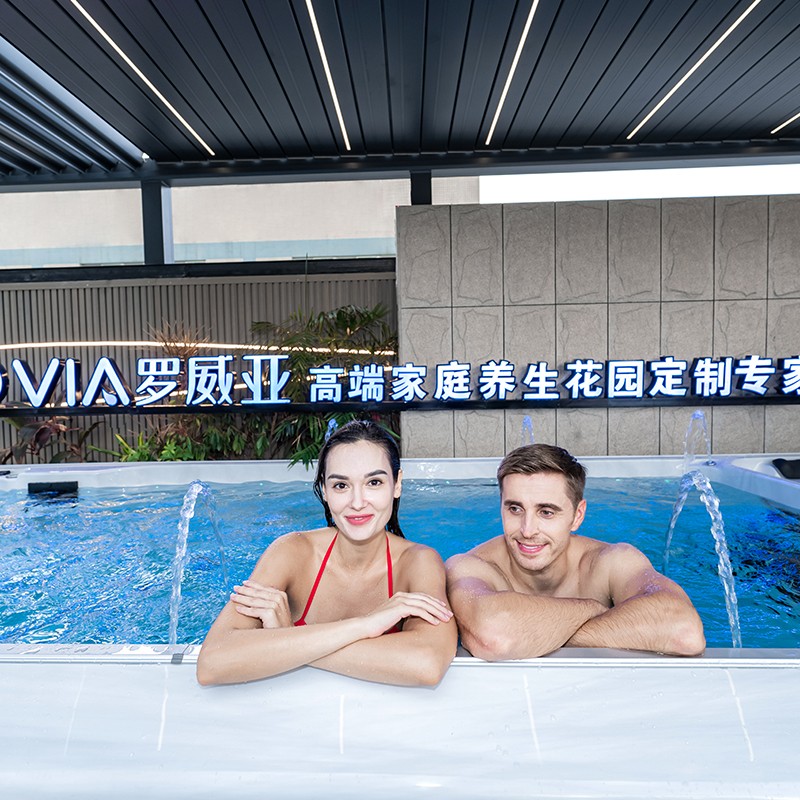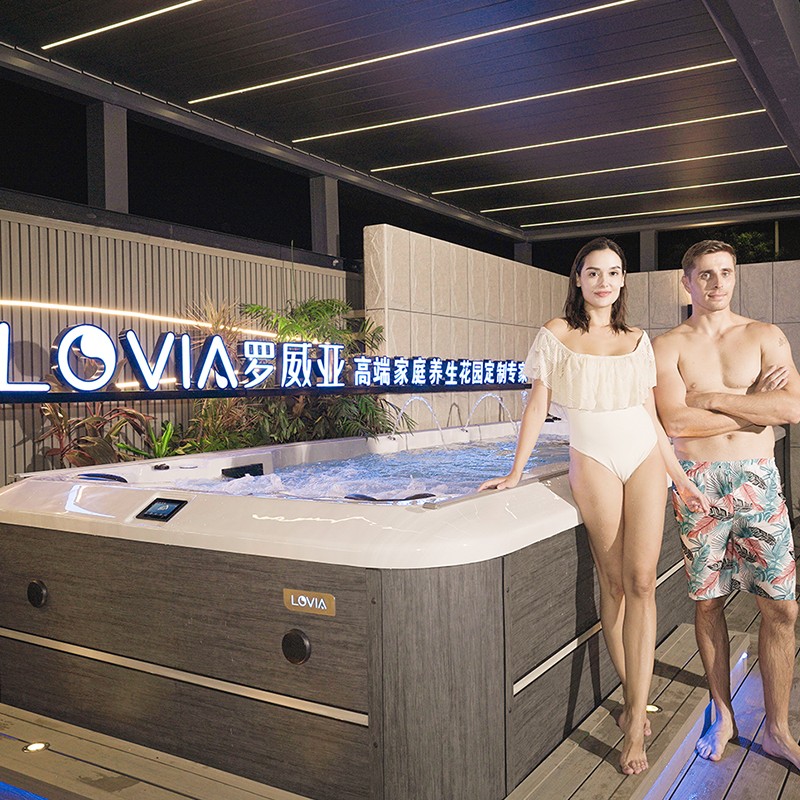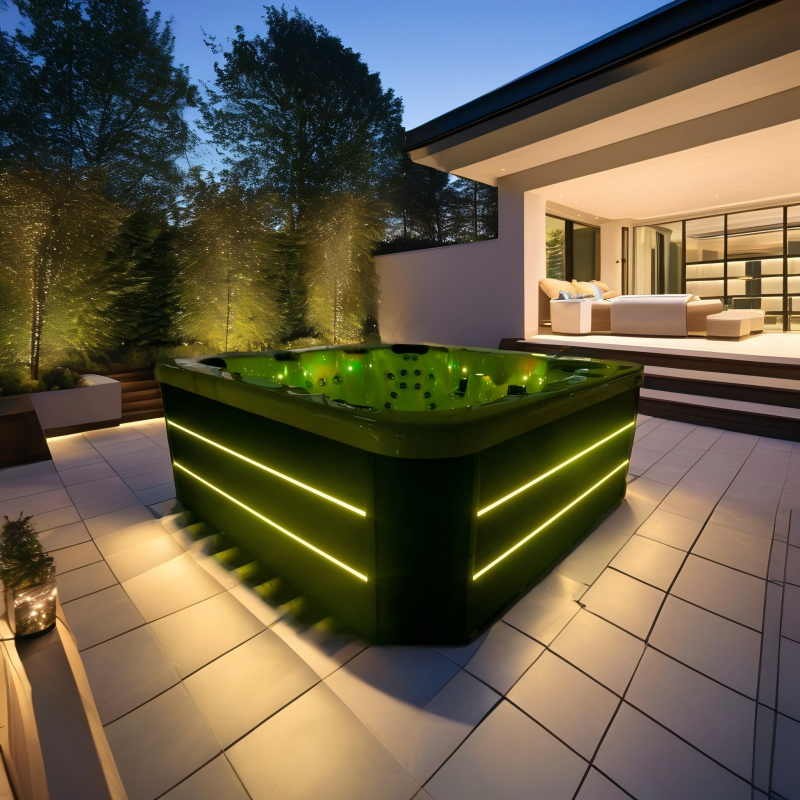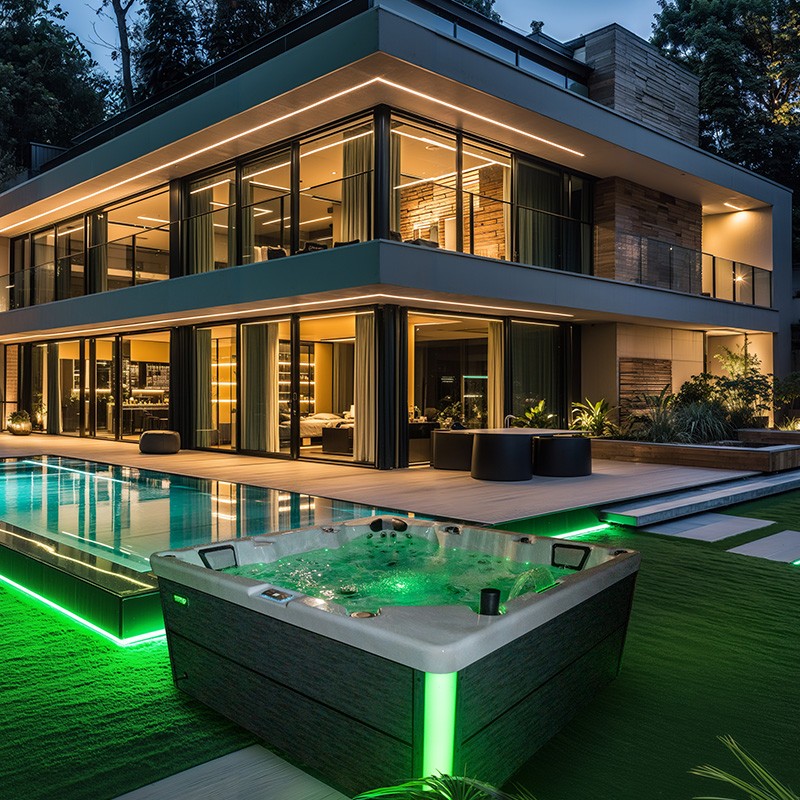
Is it harmful to leave a swim spa hot tub running all night?
2025-11-24 15:30Swim spa hot tubs are becoming increasingly popular in modern homes. Combining the comfort of a jacuzzi with the exercise benefits of a swimming pool, they are an ideal choice for family relaxation and fitness. However, many users have a common question: Is it harmful to leave a swim spa hot tub running all night?
On the surface, keeping a swim spa hot tub running overnight seems to save reheating time, but in reality, this practice may pose risks to energy consumption, safety, equipment lifespan, and water quality.
This article will analyze this issue in depth, explaining from multiple perspectives why leaving a swim spa hot tub running all night is not a good idea, and how to scientifically manage usage time to ensure safety and efficiency.

What are the potential risks of leaving a swim spa hot tub running all night?
1. Will energy consumption increase significantly?
Swim spa hot tubs are inherently energy-intensive devices. Their circulation system, heating element, filter, bubble pump, and jet system all consume a significant amount of electricity during operation.
Running a swim spa hot tub overnight, even when unused, requires the heater to maintain a constant water temperature (typically between 36°C and 38°C), resulting in continuous energy consumption.
Depending on the power rating of different models, running a swim spa hot tub continuously for 8 hours can consume an additional 5–10 kWh of electricity. If this is done daily, monthly energy costs will increase significantly.
Therefore, from an economic perspective, running a swim spa hot tub overnight is not an energy-saving option, but rather a waste of electricity and resources.
2. Will it affect the equipment's lifespan?
The core components of a swim spa hot tub include the circulation pump, heater, and jet system. These mechanical devices are prone to overheating or wear under prolonged continuous operation.
• Prolonged operation of the circulation pump can cause bearing temperatures to rise, reducing lubrication effectiveness.
• Continuous operation of the heater can accelerate oxidation and calcification of metal components.
• If the jet system and air pump are not used intermittently, it will shorten the lifespan of seals and pipes.
Therefore, running a swim spa hot tub overnight can actually accelerate equipment aging, increasing maintenance frequency and replacement costs.

Will running a swim spa overnight affect water quality safety?
1. Does the high temperature environment promote bacterial growth?
Many people mistakenly believe that high temperatures kill bacteria, but in the closed, circulating environment of a swim spa hot tub, high temperatures may actually promote the reproduction of some bacteria.
Especially when the concentration of chemical disinfectants decreases (e.g., chlorine or bromine levels are below standard), bacteria such as Legionella may multiply in the warm water environment.
The temperature of a spa is usually maintained at around 37°C, which is the ideal growth temperature for some microorganisms. If the equipment is not turned off overnight and filtration or flushing disinfection is not performed, a "biofilm" can easily form, causing the water quality to gradually deteriorate.
2. What happens to the disinfectant concentration?
• Prolonged heating accelerates the volatilization and decomposition of chemicals.
• Chlorine is easily volatilized at high temperatures, and its concentration decreases rapidly.
• Although bromine is relatively stable, it will still be consumed by organic impurities during prolonged circulation.
When the chemical balance is disrupted, unpleasant odors, turbidity, or foam may appear in the water. This not only affects the spa experience but also increases the risk of skin irritation and infection.
Are there any safety hazards in running a swim spa hot tub all night?
1. Is there a risk of overloading the electrical system?
A swim spa hot tub involves three main systems: water, electricity, and heat. If it runs continuously overnight, the motor, heating element, and control panel will all be under load.
• If the electrical wiring is old or has poor contact, it may lead to overheating, short circuits, or even fire risks.
• If the swim spa hot tub is placed outdoors, the high humidity at night may increase the risk of electric shock if it remains powered on for an extended period.
Therefore, even if the swim spa hot tub has automatic temperature control and safety features, it is not recommended to leave it running unattended overnight.
2. The impact of water vapor and air humidity
Continuous operation will increase evaporation from the water surface, especially in enclosed environments (such as indoor spa areas), where air humidity may rise significantly.
Prolonged high humidity can lead to:
• Mold growth on interior walls, wooden structures, or metal parts;
• Shortened lifespan of electrical appliances;
• Deteriorated air quality, affecting breathing comfort.
Therefore, if it is necessary to maintain water temperature overnight, a lid or insulated cover should be used to reduce evaporation.

Is it necessary to keep the swim spa hot tub continuously heated?
1. Heating System Insulation Efficiency
Many swim spa hot tubs have good insulation and can maintain water temperature for several hours after being turned off.
If you use it during the day, you can simply turn off the heating system at night, allowing the water temperature to drop naturally, and reheat it the next day.
Modern spa equipment has high heating efficiency and usually only needs 1–2 hours to restore the ideal temperature.
2. Exceptions to Constant Temperature Operation
In some cases, low-power operation can indeed be considered:
• If the air temperature is too low (e.g., outdoor use in winter);
• If you plan to use it the next morning;
• If the spa system has an "energy-saving mode" that automatically adjusts the temperature.
However, even then, an automatic circulation period should be set, rather than continuous operation overnight.
Will running it all night increase maintenance costs?
1. Increased Electricity and Water Treatment Costs
Running it all night means:
• Continuous power consumption;
• Accelerated disinfectant consumption;
• Increased water evaporation.
This not only increases operating costs but may also require more frequent water quality testing and chemical additions.
If the swim spa hot tub runs for 8 hours a day, consuming extra electricity at a price of 1 yuan per kilowatt-hour, it could add hundreds of yuan to your monthly expenses. This accumulates into a significant hidden cost over the long term.
2. Component Wear and Maintenance Frequency
Continuous operation puts mechanical components under prolonged load, subjecting internal seals, pipe connections, and the heater's inner walls to additional stress.
This will lead to:
• Shorter maintenance cycles;
• Increased filter replacement frequency;
• Reduced overall lifespan.
In other words, while it may seem convenient in the short term, it will increase the long-term maintenance costs of the swim spa hot tub.
Is there a more scientific way to maintain water temperature?
1. Use a tub insulation cover
This is the most direct and effective method.
High-quality tub insulation covers can reduce heat loss by up to 70%, significantly reducing nighttime energy consumption.
With the insulation cover on, the heater can be completely turned off while the water temperature remains at a high level.
2. Enable the timer function
Modern swim spa hot tubs typically come with a timer control system that allows you to set heating and filtration cycles.
For example, you can turn off the heating at night, leaving only a short filtration cycle running, automatically resuming operation in the morning.
This ensures clean water quality while avoiding wasted energy from running all night.
3. Maintain a proper water balance
Maintaining the correct pH level and disinfectant concentration (chlorine 1–3 ppm or bromine 3–5 ppm) ensures that even when the system is turned off at night, the water quality remains stable and does not deteriorate or breed bacteria.
What practices ensure safety and energy efficiency at night?
• Use energy-efficient insulation and covers to reduce heat loss;
• Ensure the electrical system is waterproof and has an automatic power-off function;
• Only operate low-speed circulation at night, turning off jet and massage modes;
• Regularly check the pump and heater temperature control devices for proper function;
• Choose an intelligent control system with a Sleep Mode.
These measures effectively reduce the risks associated with overnight operation while ensuring comfort and safety.
Can LOVIA SPA Help Design a Private Label Spa Brand?
Definitely. LOVIA SPA offers OEM/ODM services to help clients build private label brands. We customize shells, panels, packaging, and marketing logos to reflect your brand identity. As a professional manufacturer, we help create competitive spa brands ready for retail or online sales. Purchasing from LOVIA SPA means building your own identity backed by high-quality production and strong supplier support.

